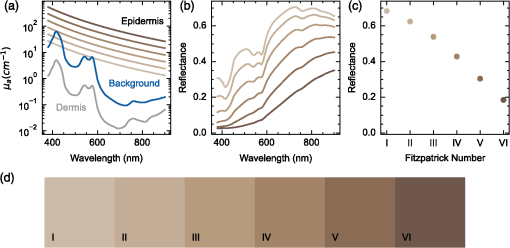2024-08-06 ケンブリッジ大学
<関連情報>
- https://www.cam.ac.uk/stories/light-for-cancer-detection
- https://www.spiedigitallibrary.org/journals/journal-of-biomedical-optics/volume-29/issue-S1/S11506/Effects-of-skin-tone-on-photoacoustic-imaging-and-oximetry/10.1117/1.JBO.29.S1.S11506
皮膚の色調が光音響イメージングとオキシメトリーに及ぼす影響 Effects of skin tone on photoacoustic imaging and oximetry
Thomas R. Else, Lina Hacker, Janek Gröhl, Ellie V. Bunce, Ran Tao, Sarah E. Bohndiek
Journal of Biomedical Optics Published:20 December 2023
DOI:https://doi.org/10.1117/1.JBO.29.S1.S11506

Abstract
Significance
Photoacoustic imaging (PAI) provides contrast based on the concentration of optical absorbers in tissue, enabling the assessment of functional physiological parameters such as blood oxygen saturation (sO2). Recent evidence suggests that variation in melanin levels in the epidermis leads to measurement biases in optical technologies, which could potentially limit the application of these biomarkers in diverse populations.
Aim
To examine the effects of skin melanin pigmentation on PAI and oximetry.
Approach
We evaluated the effects of skin tone in PAI using a computational skin model, two-layer melanin-containing tissue-mimicking phantoms, and mice of a consistent genetic background with varying pigmentations. The computational skin model was validated by simulating the diffuse reflectance spectrum using the adding-doubling method, allowing us to assign our simulation parameters to approximate Fitzpatrick skin types. Monte Carlo simulations and acoustic simulations were run to obtain idealized photoacoustic images of our skin model. Photoacoustic images of the phantoms and mice were acquired using a commercial instrument. Reconstructed images were processed with linear spectral unmixing to estimate blood oxygenation. Linear unmixing results were compared with a learned unmixing approach based on gradient-boosted regression.
Results
Our computational skin model was consistent with representative literature for in vivo skin reflectance measurements. We observed consistent spectral coloring effects across all model systems, with an overestimation of sO2 and more image artifacts observed with increasing melanin concentration. The learned unmixing approach reduced the measurement bias, but predictions made at lower blood sO2 still suffered from a skin tone-dependent effect.
Conclusion
PAI demonstrates measurement bias, including an overestimation of blood sO2, in higher Fitzpatrick skin types. Future research should aim to characterize this effect in humans to ensure equitable application of the technology.


